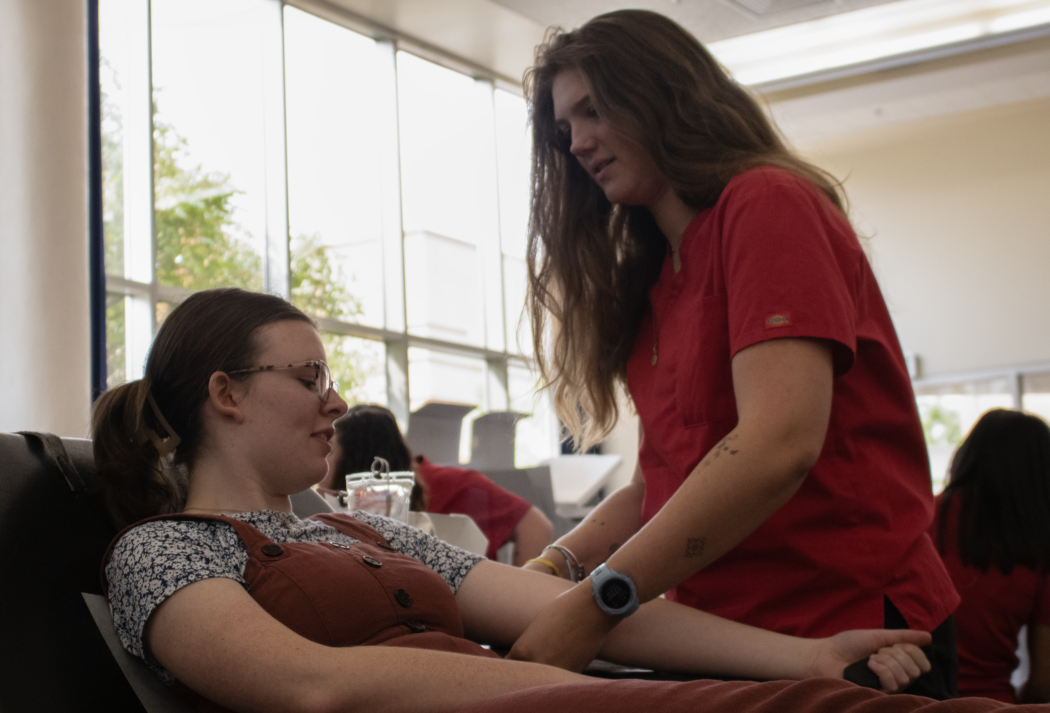21st annual Blood Battle exceeds goal
On Sept. 3-6, Utah State University hosted a blood drive in the TSC as part of the 21st annual Blood Battle, a friendly competition with Weber State University to bring in the most blood donations.
Tim Schwen, Red Cross account manager and donor recruitment specialist described turnout on the second day of the drive.
“Things are already going well our first day,” Schwen said. Attendance continued to grow throughout the week. According to Sarah Martin, Red Cross Regional communications manager, USU surpassed its donation goal for the Blood Battle.
“Students and community members donated 363 units of blood, hitting nearly 115% of our goal,” Martin said. “We are deeply grateful to the USU community for their efforts.”
Since the first Blood Battle in 2003, USU and WSU have collected nearly 20,000 units of blood for the American Red Cross.
The Blood Battle moved to WSU Sept. 9-13. Information on who won the competition is pending, but USU has won every year since 2019.
“After a week-long drive at USU, Weber State will attempt to take the trophy for the first time in 5 years,” said Martin.
USU president Elizabeth Cantwell believes the friendly competition between USU and WSU acts as an additional incentive for people to donate.
“We compete with Weber State all the time, and this is a way that actually does good, right?” Cantwell said. “It’s not just pure, unadulterated competition.”
In an article published by Penn State Health News, Melissa George, medical director of transfusion medicine at Penn State Health Milton S. Hershey Medical Center, said young adults are vital to increasing blood donation trends.
“We have a desperate, desperate need for young, healthy donors. Many blood donors are retirees, and we lose more and more of them each year due to their own health conditions,” George said. “We need to get the younger generations to be committed.”
Although the Blood Battle is over, Cantwell students to continue to donate blood.
“Now is the time to get into the habit of being a blood donor,” Cantwell said. “It’s a gateway habit to so many other kinds of lifelong service.”
The American Red Cross invites donors of all blood types to address the critical blood shortage in the United States. According to a Red Cross press release, its national blood inventory “plummeted more than 25% in July.”
“We used to collect 1,200 units a week,” Schwen said. “Now we’re down about four or five hundred.”
Factors including record summer heat and natural disasters contribute to this crisis. The Red Cross “continues to face the fewest number of people donating blood in the past two decades.”
Cantwell stressed donating blood impacts everyone. “By the time you’re my age, almost everybody has had one time in their life where they’ve had to accept donated blood,” Cantwell said.
At the USUSA Executive Council meeting on Sept. 10, Mayu Mecham announced the Christensen Office of Social Action and Sustainability will host its next Red Cross blood drive on Oct. 28.

